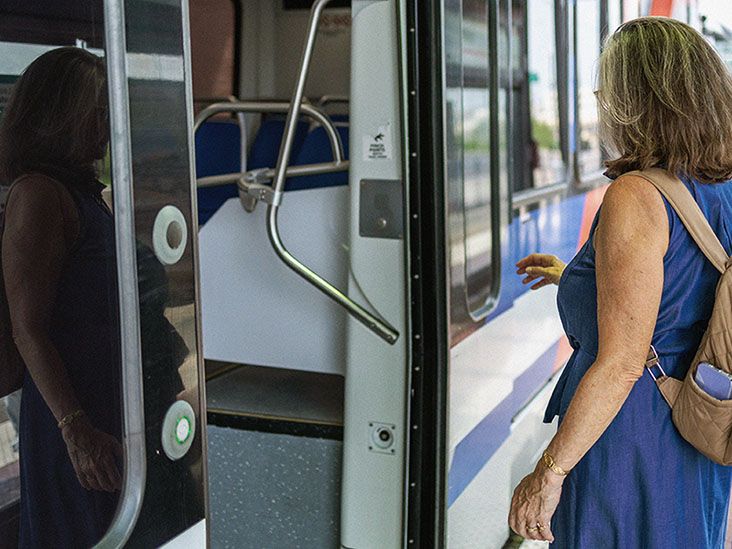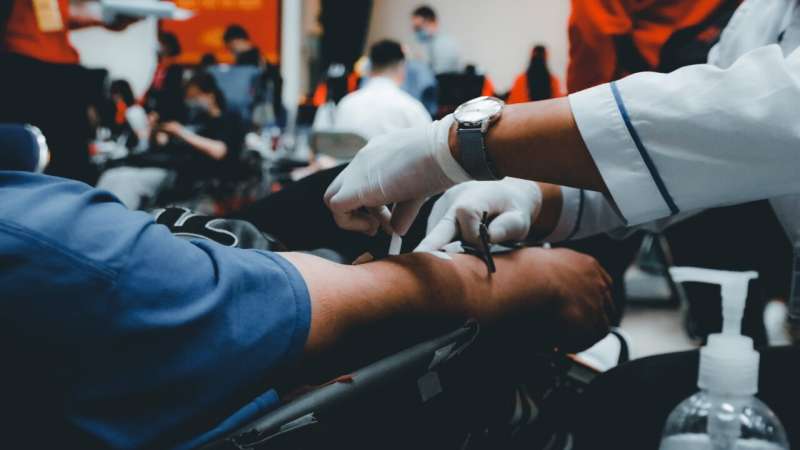If you're caring for someone you love, you know the marathon is real. The appointments, the medications, the late-night worrysometimes you need a short, safe break to rest, regroup, and breathe. That's where Medicare respite care can helpbut here's the honest truth: Medicare respite care coverage is narrow, specific, and often misunderstood. The good news? When you know the rules, you can use them to your advantage and plan care that fits your family, your budget, and your heart.
In this guide, I'll walk you through exactly what Medicare covers for hospice care respite, who qualifies, what you'll pay, and how to set it up step by step. And if your loved one doesn't qualify? Don't worrywe'll explore smart alternatives like Medicare Advantage benefits, Medicaid waivers, VA support, and community resources that can help pay for short-term respite care. My aim is simple: give you clear answers, save you stress, and help you feel confident about your next move.
Quick answer
Let's start with the headline: Original Medicare (Part A and Part B) only pays for respite care when a person has elected the hospice benefit. Even then, coverage is limited to short inpatient staystypically up to five consecutive days in a Medicare-certified facilitywith a small coinsurance. If your loved one isn't on hospice, Original Medicare doesn't cover respite. That's the tough news. The brighter side is that some Medicare Advantage plans and other programs offer extra help. We'll get there shortly.
The short version
Here's Medicare respite care coverage at a glance: It's part of the Medicare Part A hospice benefit. Respite is limited to up to five consecutive days per stay and must take place in a Medicare-certified hospital, skilled nursing facility, or inpatient hospice center. You'll usually pay 5% of the Medicare-approved amount as coinsurance. This is sometimes called hospice care respite because it's designed to give family caregivers a short, restorative break while the patient remains enrolled in hospice.
Who qualifies for hospice
To access Medicare hospice benefits (including respite), the person must have a terminal illness with a life expectancy of six months or less if the disease runs its normal course. Two things must happen: a physician (usually your doctor and the hospice medical director) must certify the prognosis, and the patient must elect hospicemeaning the focus shifts from curative treatments to comfort-focused, palliative care. This doesn't mean giving up; it means prioritizing quality of life and symptom relief.
Hospice runs in benefit periods: first two 90-day periods, then unlimited 60-day periods after that, as long as the hospice medical director recertifies that the patient remains eligible. Respite care can be used during any of these periods, as needed and as appropriate.
What's covered
When Medicare hospice benefits are active, respite care is one of the covered serviceswithin limits.
Settings and duration
Respite must happen in a Medicare-certified setting: a hospital, a skilled nursing facility (SNF), or an inpatient hospice facility. The stay can last up to five consecutive days. The day your loved one is admitted counts toward the five; the day they're discharged doesn't. After the stay, the patient returns home and resumes routine hospice services.
What you'll pay
Expect a 5% coinsurance of the Medicare-approved amount for inpatient respite. Medicare also caps that amount so your coinsurance can't exceed the inpatient hospital deductible for that year. Your hospice provider can explain your exact copay once they know the facility and dates. If you're budgeting, ask for a written estimate so there are no surprises.
How often you can use it
Medicare says respite should be used "occasionally." There's no strict calendar limit baked into the rules, but if it starts to resemble a revolving door of continuous inpatient care, Medicare or the hospice may question it. This is where coordination mattersmore on that in the planning steps below.
What's not covered
Original Medicare doesn't cover in-home respite under hospice. There also needs to be an identified caregiver who usually provides care at home; if there isn't one, respite typically won't be approved. And Medicare won't cover respite delivered in assisted living or other residential settings unless the facility is specifically Medicare-certified for this purpose. These details can be frustrating, but they're important guardrails as you plan.
Other options
If your loved one isn't on hospiceor if you need more flexibilitythere are other paths worth exploring. Some of these can work alongside Medicare hospice benefits; others are alternatives when hospice isn't appropriate yet.
Medicare Advantage
Many Medicare Advantage (Part C) plans offer supplemental benefits beyond Original Medicare. Depending on your plan and your loved one's health needs, extras could include in-home respite, adult day services, meal delivery, non-emergency transportation, or caregiver support programs. Benefits vary widely, so call your insurer and ask about respite care coverage, short-term respite care at home, and any limits or authorizations. If your loved one is still considering hospice, also ask how the plan coordinates with hospice providers.
Medicaid and states
Medicaid Home- and Community-Based Services (HCBS) waivers can be a lifeline. These state programs may cover in-home respite, adult day health, and short stays in facilities to give caregivers a break. Eligibility usually depends on income, assets, and functional needs. Each state sets its own rules, waitlists, and caps. A local Medicaid office or your Area Agency on Aging can walk you through your options and help with applications.
VA and other support
If the person you're caring for is a Veteran, the Department of Veterans Affairs may cover respite at home or in VA/community facilities, along with caregiver support services. Community programs can also help: some states offer Lifespan Respite vouchers; the National Family Caregiver Support Program (often administered through local agencies) may provide limited funding for respite; and disease-specific organizations (for example, dementia nonprofits) offer grants. Long-term care insurance policies sometimes include respite benefitsworth a careful read. If you use a Flexible Spending Account or Health Savings Account, some out-of-pocket costs may be eligible. And don't forget potential tax deductions for qualified medical expenses; talk with a tax professional if that applies.
If you want a primer straight from the source while you read: according to Medicare.gov's hospice coverage page, respite care is covered under the hospice benefit with a 5% coinsurance. For caregiver-focused help, a study overview and resources from nonprofit experts such as the National Council on Aging and Medicare counseling groups like SHIP can provide additional clarity.
Benefits vs risks
It's easy to see the upside of a short break. But it's also okay to worry about how a facility stay might affect your loved one. Let's weigh both sides so you can plan intentionally.
Why respite helps
Caregivers are human. Rest is not optionalit's care. A few days can lower stress, reduce the risk of mistakes, and restore patience and perspective. Patients benefit, too: well-rested caregivers provide safer care, and facility teams can adjust meds, observe symptoms, or update care strategies. You might finally tackle the pile of life tasks waiting for you: sleep, work, kids' events, or just a walk outside with coffee in hand. Small breaks can prevent big crises.
Potential downsides
Change can be hard. Some patients, especially those with dementia, may experience confusion or distress in new settings. Transfers can interrupt routines. The five-day limit can feel tight, and even a small coinsurance adds up. And coverage rules can be confusing in the moment you most need clarity. It's normal to feel tornrelief on one shoulder, worry on the other.
How to minimize stress
Preparation goes a long way. Send familiar objects: a favorite blanket, photos, a music playlist, a cozy sweater. Write down daily routinessleep, meals, toileting, comfort measuresso staff can keep rhythms similar to home. Ask whether the facility has dementia-friendly training and what quiet spaces are available. Arrange transportation that's calm and unhurried. Schedule respite during stable symptom periods when possible. Create a one-page "About Me" for your loved one: nicknames, communication tips, likes/dislikes, and what soothes them. And keep copies of the medication list handy for every handoff.
How to use it
Ready to set up Medicare hospice respite care? Here's a clear path to follow.
Confirm eligibility
First, talk with your loved one's doctor about hospice. If the physician certifies a life expectancy of six months or less and your family is ready to focus on comfort, you can elect hospice. Make sure Medicare Part A is active. The hospice team will guide you through paperwork and explain services, including how respite fits in.
Verify details
Ask your hospice provider which facilities near you are Medicare-certified for inpatient respite, how soon a bed might be available, and what the estimated 5% coinsurance would be. Clarify who arranges transportation, whether the hospice or the facility supplies medications during the stay, and how after-hours questions are handled.
Book the stay
Pick dates that align with your caregiving needsmaybe during a crucial work deadline, your own medical procedure, or when you simply feel the tank running dangerously low. If your loved one needs 24/7 nursing availability, confirm the unit level in advance. Make a short packing list: clothing layers, toiletries, hearing aids and chargers, glasses, mouth care items, and comfort objects.
Plan finances and paperwork
Estimate your 5% copay so you can plan your budget. Bring ID, Medicare cards, hospice contact info, advance directives or POLST, a current medication list, allergy list, and emergency contacts. If you're coordinating with family, assign someone to be the point person and share the facility phone number and visiting hours.
After discharge
Debrief with the hospice nurse or social worker. What went well? Any changes in symptoms or behavior? Adjust routines at home based on what you learned. If respite helpedand you're still within the spirit of "occasional" useschedule the next window now so you're not scrambling in a crisis. Think of respite as a rhythm, not a last resort.
Costs and planning
Let's talk money with open eyes. Costs vary by location and care level, and even when Medicare is involved, some out-of-pocket expenses will pop up.
Typical ranges
Daily facility rates differ by region and by whether care is in a hospital, SNF, or dedicated inpatient hospice. When Medicare hospice respite is in play, you'll pay 5% coinsurance of the Medicare-approved amount, not the full private-pay rate. If you're comparing out-of-pocket options outside hospice, adult day centers are typically less expensive than overnight facility care, and in-home respite costs depend on agency rates and hours needed.
Lowering costs
Ask your hospice team to compare eligible facilities and provide cost estimates for your dates. If you have Medicare Advantage, call your plan to check for in-home respite or adult day coverage. Explore Medicaid HCBS waivers if you meet financial and functional criteria. Look into community vouchers or grants through your Area Agency on Aging or disease-specific organizations. Consider tax strategies for medical expenses, and coordinate with family members who can share the loadfinancially or with time.
A real-world story
Let me share a snapshot, because sometimes stories unlock what facts alone can't. A daughter I'll call Mariah cared for her mom with advanced dementia. She was doing everythingmeals, meds, showers, soothing nighttime wanderingand she was exhausted. When her mom's doctor suggested hospice to support comfort, Mariah hesitated. But after learning that hospice would bring nurses, aides, and even brief inpatient breaks, she said yes.
Two months in, Mariah scheduled a three-day hospice respite stay at a nearby inpatient hospice unit. She sent Mom with her favorite cardigan and a playlist of 1960s soul. The first evening was bumpynew faces, a different bedbut by day two, the staff had her mom's routine down. Mariah slept, met a friend for lunch, and finally caught up on bills. When her mom came home, Mariah cried in the drivewaynot from sadness, but from relief. She told me later, "That break kept me going. I could see my mom again, not just the tasks."
What to ask
When you're evaluating options, here are a few questions that help you cut through the noise:
- Is the facility Medicare-certified for inpatient hospice respite?
- How soon can a respite bed be available, and what's the typical length of stay?
- What will my 5% coinsurance be, and how is it billed?
- How do you support patients with dementia or anxiety during transitions?
- Who manages medications and symptom control during the respite stay?
- How do you coordinate with the hospice team before admission and after discharge?
Practical checklist
Before you book your first stay, use this quick checklist to keep things simple:
- Eligibility: Physician certification (6 months), hospice election signed, Part A active.
- Facility: Confirm Medicare certification, bed availability, visiting hours.
- Costs: Request written estimate of 5% coinsurance; note any additional fees.
- Documents: ID, Medicare card, hospice contact, medication list, advance directives.
- Comfort items: Clothing, toiletries, glasses/hearing aids, photos, music, blanket.
- Routines: One-page sheet with sleep, meals, preferences, calming techniques.
- Transport: Arrange pickup/drop-off; pack meds if instructed by hospice.
- Follow-up: Schedule a debrief with hospice; plan the next respite window if helpful.
Final thoughts
Medicare respite care is realbut it's narrow. If your loved one is enrolled in Medicare hospice benefits, you can usually access up to five consecutive days of inpatient respite in a Medicare-certified facility, with a small coinsurance. Outside hospice, Original Medicare doesn't cover short-term respite care. That said, some Medicare Advantage plans offer in-home respite or adult day services, Medicaid HCBS waivers can help families who qualify, and the VA and community grants can fill important gaps.
If you're reading this because you're tiredtruly tiredplease hear this: needing rest doesn't make you less devoted. It makes you human. The smartest care plans include care for the caregiver, too. Your next best step? Talk with your hospice team (or your loved one's doctor if you haven't started hospice yet). Confirm eligibility, ask about certified facilities and the 5% copay, and check your plan for extras that might apply. And if you want help turning all of this into a step-by-step plan for your family, ask. What would make a respite stay feel safe and doable for you? Share your thoughts and questionsI'm here to help you map it out.
FAQs
What is Medicare respite care and when does it apply?
Medicare respite care is a short‑term, inpatient stay covered under the Medicare hospice benefit. It’s available only when the patient has elected hospice care and the stay is in a Medicare‑certified hospital, skilled nursing facility, or inpatient hospice unit.
How many days of respite can I get under Medicare hospice benefits?
Medicare allows up to five consecutive days per respite episode. The stay can be repeated, but it should be “occasional” and not used as a continuous substitute for home care.
What out‑of‑pocket costs should I expect for Medicare respite care?
You are responsible for a 5% coinsurance of the Medicare‑approved amount for the inpatient stay, capped at the annual inpatient hospital deductible. The hospice provider can give a written estimate before admission.
Can I use Medicare respite care if my loved one isn’t in hospice?
No. Original Medicare (Part A and Part B) does not cover short‑term respite for patients who are not enrolled in the hospice benefit. You’ll need to explore other options such as Medicare Advantage, Medicaid waivers, or community programs.
Are there alternative programs that cover respite care beyond Original Medicare?
Yes. Many Medicare Advantage plans add in‑home respite or adult‑day services. State Medicaid HCBS waivers often cover in‑home or facility respite, and the VA, long‑term care insurance, and local caregiver support programs may also provide assistance.
Disclaimer: This article is for informational purposes only and does not constitute medical advice. Always consult with a healthcare professional before starting any new treatment regimen.
Related Coverage
Get free rides and Medicare transportation benefits for seniors. Learn how to access covered services and stay independent....
Learn how the Medicare 3-midnight rule affects skilled nursing facility coverage and avoid unexpected out-of-pocket costs....
Wondering which custodial care service is right for you or your family in 2024? Check out our top 5 recommendations, including nursing homes, assisted living, and more. Find the best fit for your loved one's needs....
Dying and dieing are often confused due to similar spellings. Learn the proper uses of dying, why dieing is incorrect, and tips to remember the right word....
Get clear info on Medicare in Oregon, including coverage options, Medicare Advantage, Part D, and how it works with OHP....
Learn about fresh wasabi's intense flavor and health benefits and discover where to buy the top authentic wasabi paste to perfectly complement sushi....
Learn how Medicare nonparticipating providers work, including billing practices and out-of-pocket costs. Get informed today....
Get clear info on Medicare Arizona options, including Part A, B, C, and D. Find the best plan for your health and budget in 2025....
Get expert Medicare enrollment help to choose the right coverage. Avoid penalties and make informed decisions with our guide....
Discover easy tips and creative ideas to add more fruits and veggies to your daily diet. Meet nutrition recommendations and improve your health....









